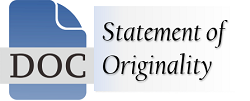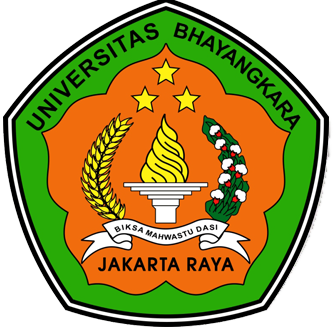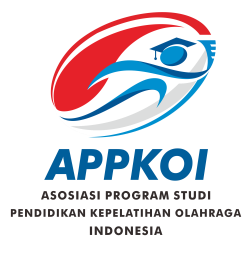Fluid Intake and Hydration Strategies of Bodybuilders In the Capricorn District, Limpopo Province, South Africa
DOI:
https://doi.org/10.31599/2jae2p31Keywords:
Athletes, Bodybuilders, Hydration, Fluid, TrainingAbstract
Background: Bodybuilding athletes in Capricorn district of Limpopo province adhere to various hydration practices. However, the extend at which these athletes adhere to the fluid intake and hydration guidelines during sport engagement is unknown. Research objectives: This study aimed to determine the fluid intake and hydration practices of bodybuilders in Capricorn District of Limpopo province and adherence to the guidelines thereof. Furthermore, to investigate the association of fluid intake with the demography of athletes. Methods: A quantitative descriptive study was used to obtain 66 part-time bodybuilders in the Capricorn district. Demographic information and hydration practices of the athletes were collected during training days. Descriptive statistics were used to summarize the athletes' fluid intake and hydration practices. Pearson's correlation test was used to associate hydration practices with the athletes' educational status and source of hydration information. Athletes were 24 (± 4.2) years old, engaged as bodybuilders for 2.3 (± 1.5) years, training once a day (61%), for 2.2 hours (males) and 2.0 hours (females). Athletes used pure water before (51%), during (47%) and after training (57%). Social media (47%) and the internet (25%) were used as sources of hydration information. There was no significant correlation between hydration practices and demographics. Conclusion: Fluid intake of athletes was suboptimal. Athletes consumed mostly pure water before, during, and after their training sessions. Therefore, athletes’ fluid intake (amount) and hydration strategies (type and timing of fluid) did not adhere (mostly suboptimal to) sports nutrition standards. This poses a risk for dehydration during sport.
Downloads
References
Adams, W.M., Vandermark, L.W., Belval, L.N. & Casa, D.J. (2019). The Utility of Thirst as a Measure of Hydration Status Following Exercise-Induced Dehydration. Nutrients 11(11), pp. 2689. https://doi.org/10.3390/nu11112689. pp. 1–13.
Alves, R.C., Prestes, J., Enes, A., de Moraes, W.M.A., Trindade, T.B., de Salles, B.F., Aragon, A.A. & Souza-Junior, T.P. (2020). ‘Training Programs Designed for Muscle Hypertrophy in Bodybuilders: A Narrative Review’, Sports, vol. 8, no. 11, p. 149.
Barley, O.R., Chapman, D.W. & Abbiss, C.R. (2020). Reviewing the current methods of assessing hydration in athletes. Journal of the International Society of Sports Nutrition, 17:52. https://doi.org/10.1186/s12970-020-00381-6.
Barley, O.R., Chapman, D.W. & Abbiss, C.R. (2019). Review: The Current State of Weight-Cutting in Combat Sports. Sports. 7, 123. DOI:10.3390/sports7050123.
Bean, A. (2022). The complete guide to sports nutrition. 9th edition, Blooms Berry Sport; London (New York), 66 – 91.
Belval, L.N., Hosokawa, Y., Casa, D.J., Adams, W.M., Armstrong, L.E., Baker, L.B., Burke, L., Cheuvront, S., Chiampas, G., González-Alonso, J., Huggins, R.A., Kavouras, S.A., Lee, E.C., McDermott, B.P., Miller, K., Schlader, Z., Sims, S., Stearns, R.L., Troyanos, C. & Wingo, J. (2019). Practical hydration solutions for sports., Nutrients. 11: 7. DOI:10.3390/nu11071550.
Bourkea B.E.P., Bakerb D.F., & Braakhuis A.J. (2018). Social Media as a Nutrition Resource for Athletes: A Cross-Sectional Survey”. Journal of Sport Nutrition and Exercise Metabolism, 1 – 11. DOI: https://doi.org/10.1123/ijsnem.2018-0135.
Ceylan, B. (2021). ‘Hydration Status and Fluid Intake of Adolescent Athletes From Different Sports During Training’, Turkish Journal of Sport and Exercise, vol. 23, no. 2, pp. 165–70.
Chappell, A.J. & Simper, T. (2018). ‘Dietary Strategies of Elite Natural Bodybuilders’, Proceedings of the Nutrition Society, vol. 76, no. OCE2, p. 28.
Collins, J., Maughan, R.J., Gleeson, M., Bilsborough, J., Jeukendrup, A., Morton, J.P., Phillips, S.M., Armstrong, L., Burke, L.M., Close, G.L., Duffield, R., Larson-Meyer, E., Louis, J., Medina, D., Meyer, F., Rollo, I., Sundgot-Borgen, J., Wall, B.T., Boullosa, B., Dupont, G., Lizarraga, A., Res, P., Bizzini, M., Castagna, C., Cowie, C.M., D’Hooghe, M., Geyer, H., Meyer, T., Papadimitriou, N., Vouillamoz, M. & McCall, A. (2021). UEFA expert group statement on nutrition in elite football. Current evidence to inform practical recommendations and guide future research. British Journal of Sports Medicine, vol. 55, no. 8, pp. 416.
Desbrow, B. (2021). Youth Athlete Development and Nutrition. Sports Medicine, 51 (Suppl 1): S3–S12. https://doi.org/10.1007/s40279-021-01534-6.
Dube, A., Gouws, C. & Breukelman, G. (2022). Effects of hypohydration and fluid balance in athletes ’ cognitive performance : a systematic review, Afri Health Sci., 22(1), pp. 367-76. https://dx.doi.org/10.4314/ahs.v22i1.45.
Ersoy, N., Ersoy, G. & Kutlu, M. 2016, ‘Assessment of hydration status of elite young male soccer players with different methods and new approach method of substitute urine strip’, Journal of the International Society of Sports Nutrition, pp. 16–21.
Escalante, G., Stevenson S., Barakat C., Aragon A.A & Schoenfeld, B.J. (2021). Peak week recommendations for bodybuilders: an evidence-based approach. BMC Sports Science, Medicine and Rehabilitation. 13:68. https://doi.org/10.1186/s13102-021-00296-y.
Franchini, E., Brito, C.J. & Artioli, G.G. (2012) Weight loss in combat sports : physiological , psychological and performance effects, pp. 2–7.
Grozenski, A. & Kiel, J. (2020). Basic Nutrition for Sports Participation, Part 1 : Diet Composition, Macronutrients, and Hydration, no. 4, pp. 389–91.
Halder, S. & Daw, S. (2020). Importance of sports drinks as a performance pre. Senhri Journal of Multidisciplinary Studies. 5, No. 2 (July - December 2020), pp. 09-19 https://doi.org/10.36110/sjms.2020.05.02.002.
Heaton, L.E., Davis, J.K., Rawson, E.S., Nuccio, R.P., Witard, O.C., Stein, K.W., Baar, K., Carter, J.M. & Baker, L.B. (2017). ‘Selected In-Season Nutritional Strategies to Enhance Recovery for Team Sport Athletes: A Practical Overview’, Sports Medicine, vol. 47, no. 11, pp. 2201–18.
Hew-Butler, T., Rosner, M.H., Fowkes-Godek, S., Dugas, J.P., Hoffman, M.D., Lewis, D.P., Maughan, R.J., Miller, K.C., Montain, S.J., Rehrer, N.J., Roberts, W.O., Rogers, I.R., Siegel, A.J., Stuempfle, K.J., Winger, J.M. and Verbalis, J.G. (2015). Statement of the 3rd international exercise-associated hyponatremia consensus development conference, Carlsbad, California, 2015. British Journal of Sports Medicine, 49(22), pp. 1432–1446. https://doi.org/10.1136/bjsports-2015-095004.
Iraki, J., Fitschen, P., Espinar, S. & Helms, E. (2019). Nutrition Recommendations for Bodybuilders in the Off-Season: A Narrative Review. Sports, vol. 7, no. 7, p. 154. DOI:10.3390/sports7070154.
Januszko P and Lange E (2019). Nutrition, supplementation and weight reduction in combat sports: a review AIMS Public Health, 8 (3), pp. 485–498. DOI: 10.3934/publichealth.2021038.
Judge, W.L., Bellar, D.M., Popp J.K., Craig, B.W., Schoeff, M.A., Hoover, D.L., Fox, B., Kistler B.M., Al-Nawaiseh, A.M. (2021). Hydration to Maximize Performance And Recovery: Knowledge, Attitudes, and Behaviours Among Collegiate Track and Field Throwers. Journal of Human Kinetics volume, 79/2021, 111-122. DOI: 10.2478/hukin-2021-0065 111 Section II ‐ Exercise Physiology & Sports Medicine.
Kerksick, C.M., Wilborn, C.D., Roberts, M.D., Smith-Ryan, A, Kleiner, S.M., Jäger, R., Collins, R., Cooke, M., Davis, J.N., Galvan, E., Greenwood, M., Lowery, L.M., Wildman, R., Antonio, J. & Kreider, R.B. (2018). ISSN exercise & sports nutrition review update: research & recommendations. Journal of the International Society of Sports Nutrition, 15(1), pp. 38. https://doi.org/10.1186/s12970-018-0242-y.
Klein, D.J., Eck, K.M., Walker, A.J., Pellegrino, J.K,; Freidenreich, D.J. (2021). Assessment of Sports Nutrition Knowledge, Dietary Practices, and Sources of Nutrition Information in NCAA Division III Collegiate Athletes. Nutrients, 13, pp. 2962. https://doi.org/ 10.3390/nu13092962
Knap, B. (2021). Hydration and Physical Activity. Res Inves Sports Med, 7(4), 2021, DOI: 10.31031/RISM.2021.07.000668.
Lenzi, J.L., Teixeira, E.L., de Jesus, G., Schoenfeld, B.J. & de Salles Painelli, V. (2019). ‘Dietary Strategies of Modern Bodybuilders During Different Phases of the Competitive Cycle’, Journal of Strength and Conditioning Research, vol. Publish Ah, no. February 2020.
Masoga, S., Makuse, S.H.M. & Bopape, M.M. (2019). Dietary Intake of Amateur Bodybuilding Athletes around Polokwane Municipality in Limpopo Province, South Africa. Global Journal of Health Science, 11 (9): pp. 1-9. DOI:10.5539/gjhs.v11n9p134.
Mccubbin, A.J., Odgers, J.N.C., Cort, M.M., Costa, R.J.S., Cox, G.R., Crawshay, S.T., Desbrow, B., Freney, E.G., Gaskell, S.K., Hughes, D., Irwin, C., Jay, O., Lalor, B.J., Ross, M.L.R., Shaw, G. & Burke, L.M. (2020). Sports Dietitians Australia Position Statement : Nutrition for Exercise in Hot Environments Physiological Effects of Exertional, pp. 83–98.
Mitchell, L., Hackett, D., Gifford, J., Estermann, F. & O’Connor, H. (2017). Do Bodybuilders Use Evidence-Based Nutrition Strategies to Manipulate Physique?. Sports, 5 (4): pp. 76. DOI: 10.3390/sports5040076.
Mosler, S., Braun, H., Carlsohn, A., Großhauser, M., König, D., Lampen, A., Nieß, A., Oberritter, H., Schäbethal, K., Schek, A., Stehle, P., Virmani, K., Ziegenhagen, R. & Heseker, H. (2020). Position of the working group sports nutrition of the german nutrition society (Dge): Fluid replacement in sports’, Deutsche Zeitschrift fur Sportmedizin, 71, pp. 178–84. DOI:10.596/dzsm.2020.453
Nuccio, R.P., Barnes, K.A., Carter, J.M & Baker, L.B. (2017). Fluid Balance in Team Sport Athletes and the Effect of Hypohydration on Cognitive , Technical , and Physical Performance, Sports Medicine, 47(10), pp. 1951–82.
Parent, M.C., Heffernan, C., Woznicki, N. & Taylor, Z. (2022). Competition or Community? The Backstage Experience of Men in Bodybuilding Competitions’, Sex Roles, 87, pp. 68–84. https://doi.org/10.1007/s11199-022-01310-4
Potgieter, S. (2013). Sport nutrition: A review of the latest guidelines for exercise and sport nutrition from the American College of Sport Nutrition, the International Olympic Committee and the International Society for Sports Nutrition’, South African Journal of Clinical Nutrition, vol. 26, no. 1, pp. 6–16.
Roberts, B.M., Helms, E.R., Trexler, E.T. & Fitschen, P.J. (2020). Nutritional Recommendations for Physique Athletes, 71, pp. 79–108.
Rosenbloom, C. (2012). Food and fluid guidelines before, during, and after exercise, Nutrition Today, 47 (2), pp. 63–9.
Smith, J.W., Holmes, M.E. & McAllister, M.J. (2015). Nutritional Considerations for Performance in Young Athletes. Journal of Sports Medicine, vol. 2015, pp. 1–13. http://dx.doi.org/10.1155/2015/734649.
Steele, I.H., Pope, H.G. & Kanayama, G. (2019). Competitive Bodybuilding: Fitness, Pathology, or Both?’, Harvard Review of Psychiatry, 27(4), pp. 233–40.
Survey, A. (2016). Water and Beverage Consumption : Analysis of the Australian 2011-2012 National Nutrition and Physical Activity Survey. Nutrients. 8(11), pp. 678. DOI: 10.3390/nu8110678.
Thomas, D.T., Erdman, K.A. & Burke, L.M. (2016). Position of the Academy of Nutrition and Dietetics, Dietitians of Canada, and the American College of Sports Medicine: Nutrition and Athletic Performance. Journal of the Academy of Nutrition and Dietetics, 116(3), pp. 501–28.
Tidmas, V., Brazier, J., Hawkins, J., Forbes, S.C., Bottoms, L. & Farrington, K. (2022). Nutritional and Non-Nutritional Strategies in Bodybuilding : Impact on Kidney Function. Int J Environ Res Public Health, 19(7), pp. 4288. DOI: 10.3390/ijerph19074288.
Volpe, S.L., Poule, K.A., Bs, À. & Bland, E.G. (2009). Estimation of Prepractice Hydration Status of National Collegiate Athletic Association Division I Athletes, 44(6), pp. 624–9.
WHO expert Consultation 2008. (2011). Waist Circumference and Waist-Hip Ratio Report of a WHO Expert Consultation’, World Health, no. December 2008, pp. 8–11.
Zhang, J., Zhang, N., Wang, Y., Liang, S., Liu, S., Du, S., Xu, Y. & He, H. 2020, Drinking patterns and hydration biomarkers among young adults with different levels of habitual total drinking fluids intake in Baoding , Hebei Province , China : a cross- sectional study, BMC Public Health, 20, pp. 1–11. https://doi.org/10.1186/s12889-020-08558-z
Downloads
Published
Issue
Section
License
Copyright (c) 2024 Sylven Masoga, Elmine DuToit, Frederik Coetzee, R Schall

This work is licensed under a Creative Commons Attribution 4.0 International License.






.png)







